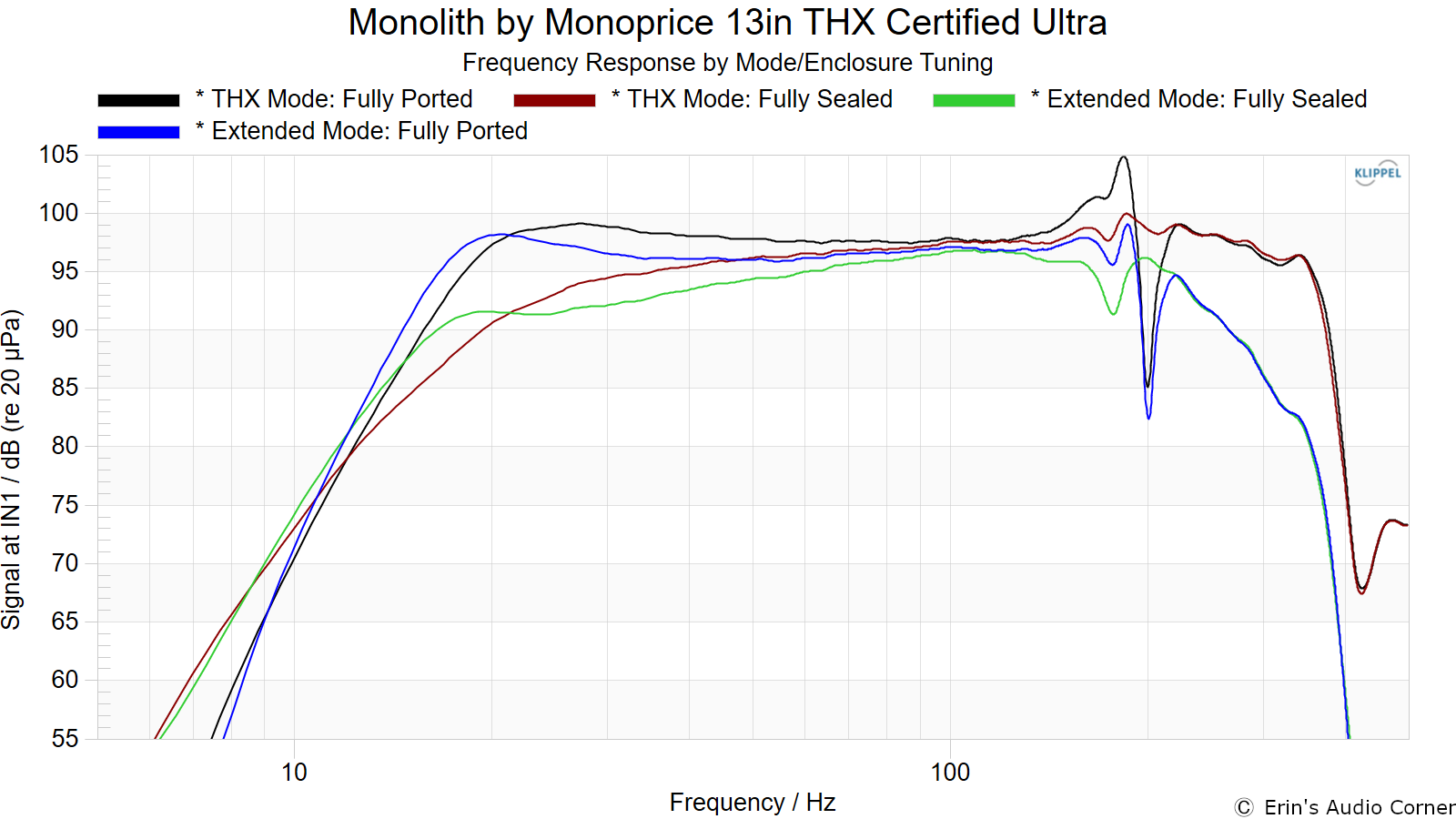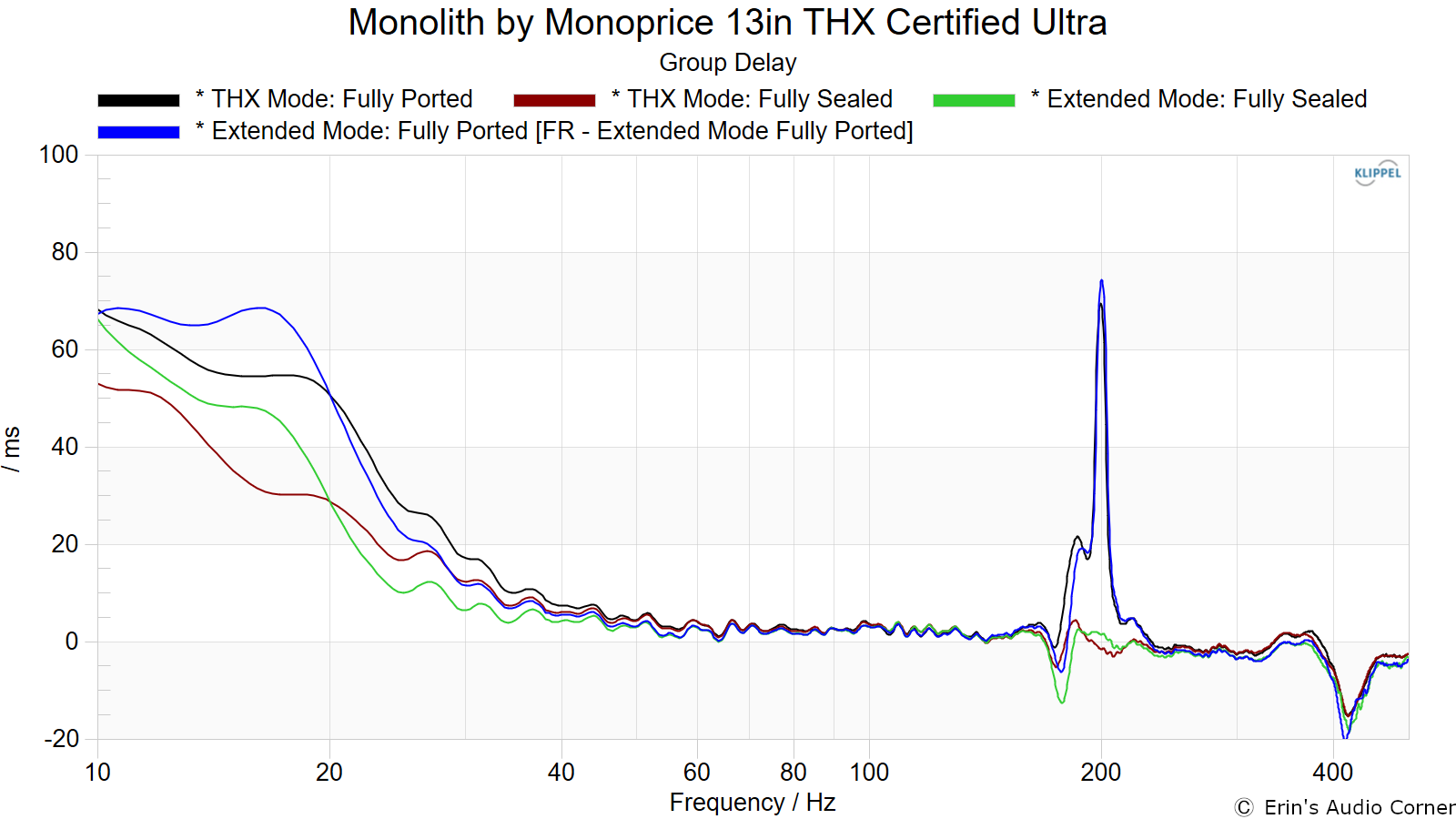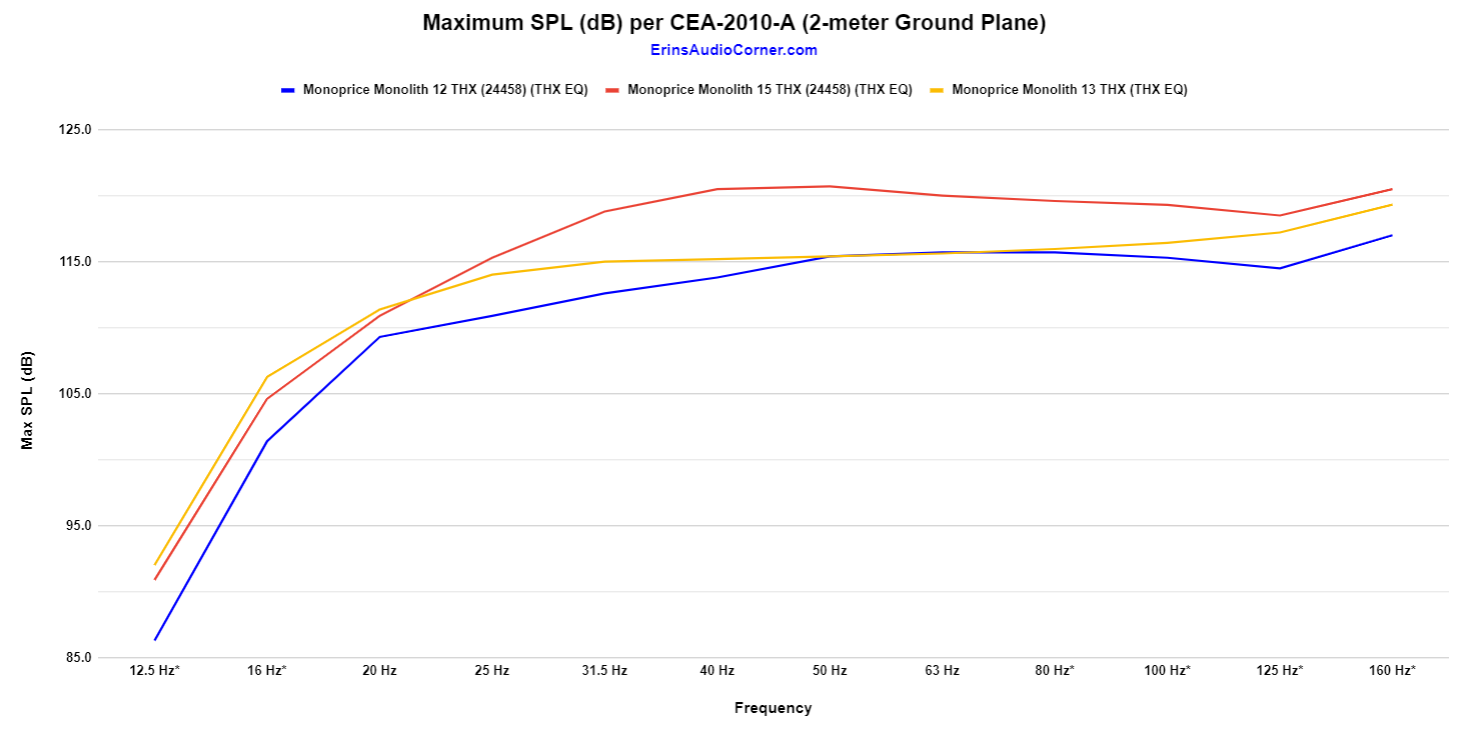Foreword / YouTube Video Review
The review on this website is a brief overview and summary of the objective performance of this speaker. It is not intended to be a deep dive. More so, this is information for those who prefer “just the facts” and prefer to have the data without the filler.
However, for those who want more - a more detailed explanation of the objective performance, and my subjective evaluation (what I heard, what I liked, etc) - please watch the below video where I go more in-depth. Additionally, my CEA-2010 test results can be viewed directly via my Google Sheet here.
Information and Photos
This subwoofer was loaned to me by Monoprice for testing and reviewing. I was not paid for this review nor did I receive anything in exchange.
This subwoofer was also reviewed by James Larson at Audioholics (link) who provided a much more thorough written analysis of his subjective thoughts than I do in this writeup (again, I have the video for that).
The current price for this subwoofer is $1699 USD. If - after viewing this data - you are interested in purchasing these please consider using either of my affiliate links below which helps me earn a small percentage of the purchase price at no additional cost to you.
Specs from the manufacturer can be found here and some are provided below:
- Driver Size: 13"
- Driver Material: 2‑layer long fiber pulp/glass fiber cone
- Voice Coil: 100mm, with high temperature aluminum wire and black anodized aluminum bobbin
- Surround: FEA optimized NBR (nitrile butadiene rubber)
- Motor: FEA optimized undercut T‑pole focused field, with 2 aluminum shorting rings
- Magnet: Ceramic Y35, 2 pieces, 300 oz. total
- Xmax: 28mm (one‑way)
- Xmech: 90mm (peak‑to‑peak)
- Enclosure: Sealed or vented HDF cabinet with horizontal and vertical bracing
- Finish: Black Ash
- Amplifier: 2000 watts (RMS)/3800+ watts (peak)
- Variable Level Control: +15/‑20 dB
- Reference Level: 100mV @ 40Hz (89dB @ 1m)
- Crossover: Inline/Bypass variable 40~160 Hz
- Variable Phase: 0~180 degrees
- Inputs: 2x RCA, 1x XLR
- Outputs: 1x XLR
- Signal Turn On: Selectable always on/auto
- Auto Turn Off Time: 30 minutes
- Dimensions (LxWxH): 29.1" x 20.3" x 23.8" (740 x 515 x 605 mm)
- Weight: 153.2 lbs. (69.5 kg)
Test Setup/Conditions:
For test setup and conditions please view my discussion on this page.
Frequency Response
The below shows the response in (4) different modes:
- THX Mode Enabled & Ported
- THX Mode Enabled & Sealed
- Extended Mode Enabled & Ported
- Extended Mode Enabled & Sealed
As you can see, the “Extended” mode generally adds a small bit more SPL at the lower frequencies but does so at the cost of linearity; exhibiting somewhat of a droop compared to that of the “THX” mode. Ported does extend the response while sealed limits the low frequency response, though, does not show the port resonance in the 200Hz region that the ported options do. However, this resonance is likely to not be a factor given it is so relatively high in frequency.

Group Delay

CEA-2010 Test Results
Below I have provided both a table and a graphic comparing the CEA-2010-A results from this subwoofer in comparison to the 12-inch and 15-inch monoprice monolith subwoofers (for reference).
CEA-2010-A: Weighted and Limited Maximum Peak SPL (dB) SPL referenced to 2-meters in Half Space (2 pi)
| Speaker | Driver(s) Size (in) | 12.5 Hz* | 16 Hz* | 20 Hz | 25 Hz | 31.5 Hz | 40 Hz | 50 Hz | 63 Hz | 80 Hz* | 100 Hz* | 125 Hz* | 160 Hz* |
|---|---|---|---|---|---|---|---|---|---|---|---|---|---|
| Monoprice Monolith 12 THX (THX EQ) | (1) 12 inch | 86.3 | 101.4 | 109.3 | 110.9 | 112.6 | 113.8 | 115.4 | 115.7 | 115.7 | 115.3 | 114.5 | 117.0 |
| Monoprice Monolith 13 THX (THX EQ) | (1) 13 inch | 92.0 | 106.3 | 111.4 | 114.0 | 115.0 | 115.2 | 115.4 | 115.6 | 116.0 | 116.4 | 117.2 | 119.3 |
| Monoprice Monolith 15 THX (THX EQ) | (1) 15 inch | 90.9 | 104.6 | 110.9 | 115.3 | 118.8 | 120.5 | 120.7 | 120.0 | 119.6 | 119.3 | 118.5 | 120.5 |

Note: All the above data is from my spreadsheet which can viewed directly here.
Nonlinearities
Traditionally, Xmax has been defined in one of the following ways:
- the physical overhang of the voice coil (height of the voice coil relative to height of the gap)
- 115% times the physical overhang above
- the point where displacement limit(s) is/are exceeded
The third option is where the Klippel LSI module comes in to play. It permits a more “apples to apples” approach of defining the displacement (Xmax) limits based on the XBL, XC, XL and Xd. The displacement limits XBL, XC, XL and Xd describe the limiting effect for the force factor Bl(x), compliance Cms(x), inductance Le(x) and Doppler effect, respectively, according to the threshold values Blmin, Cmin, Zmax and d2 used by the operator.
There are one of two sets of thresholds which can be used to define linear excursion:
- Non-Subwoofer Drivers: The thresholds Blmin= 82 %, Cmin=75 %, Zmax=10 % and d2=10% generate for a two-tone-signal (f1=fs, f2=8.5fs) 10 % total harmonic distortion and 10 % intermodulation distortion.
- Subwoofer Drivers: The thresholds Blmin= 70 %, Cmin=50 %, Zmax=17 % create 20 % total harmonic distortion which is becoming the standard for acceptable subwoofer distortion thresholds.
These parameters are defined in more detail in the (Klippel) papers:
- “AN04 – Measurement of Peak Displacement Xmax”
- “AN05 - Displacement Limits due to Driver Nonlinearities”
- “AN17 - Credibility of Nonlinear Parameters”
- “Prediction of Speaker Performance at High Amplitudes”
- “Assessment of Voice Coil Peak Displacement Xmax”
- “Assessing Large Signal Performance of Loudspeakers”
Below are the displacement limits’ results for this drive unit obtained from Klippel’s LSI module using the 20% THD threshold:
| Displacement Limits | |||
|---|---|---|---|
| X Bl @ Bl min=70% | >32.6 | mm | Displacement limit due to force factor variation |
| X C @ C min=50% | >32.6 | mm | Displacement limit due to compliance variation |
| X L @ Z max=17% | >32.6 | mm | Displacement limit due to inductance variation |
| X d @ d2=20% | 162.3 | mm | Displacement limit due to IM distortion (Doppler) |
As you can see, I was not able to test the speaker to full resolution of its limits, ultimately winding up with the LSI module showing me that this subwoofer driver has at least 32mm one-way linear excursion. This is quite a feat and one of the longest throw woofers I have seen data for and the longest linear excursion I have personally tested to date.
I typically share the Bl/Kms/Le(x) curves that come from the Klippel LSI module for drivers but since this speaker’s excursion was not fully resolved, it does mean there is the high probability that the results I share here might not be complete and therefore incorrect (the closer to the actual resolution of an xmax figure, the more accurate the curve for each component is). Rather than post incomplete/incorrect curves I have decided to just provide the values above as an indication of the performance of this drive unit with the warning they are not complete but give certain indications that this is indeed a very long-stroke drive unit in this subwoofer package.
Parting / Random Thoughts
This subwoofer is a beast. A costly beast. But, a beast nonetheless.
As you can see, the 13-inch subwoofer actually has a bit more SPL at the lowest frequencies but above 20Hz, the 15-inch version has considerably more output. Generally, I recommend subwoofers that behave more linearly throughout and the additional output of the 13-inch version yields a more overall linear response.
The frequency response is quite good and this subwoofer will fill a large room with plenty of bass (though, more than one subwoofer is always recommended to even out the in-room bass). The only real issue I have with this sub is nothing to do with its performance; it’s heavy. I’m not a bodybuilder but I am not a string bean, either, and lugging this thing around was a pain. If you need to carry this upstairs just make sure to have some help or a really good stair-friendly dolly.
As stated in the Foreword, this written review is purposely a cliff’s notes version. For more details about the performance (objectively and subjectively) please watch the YouTube video.
Support the Cause
If you find this review helpful and want to help support the cause there are a few ways you can do so below. Your support helps me pay for new items to test, hardware, miscellaneous items needed for testing and costs of the site’s server space and bandwidth. Any help is very much appreciated.
Join my Patreon: Become a Patron!
Or using my product affiliate link below to buy anything they sell that you want to try out. This will earn me a small commission at no additional cost to you. You can use these links anytime, now or in the future.
You can also join my Facebook and YouTube pages if you’d like to follow along with updates.